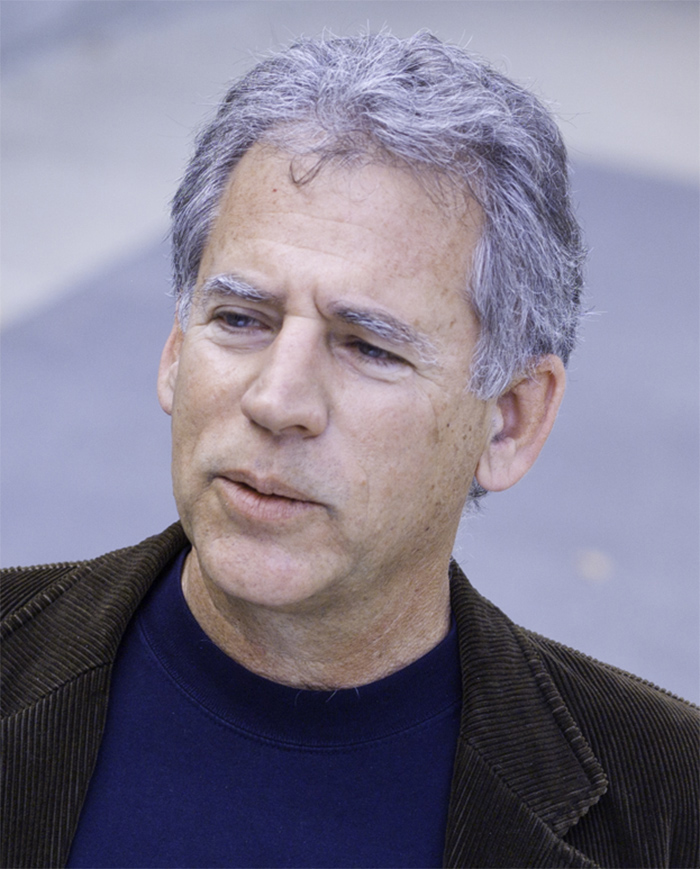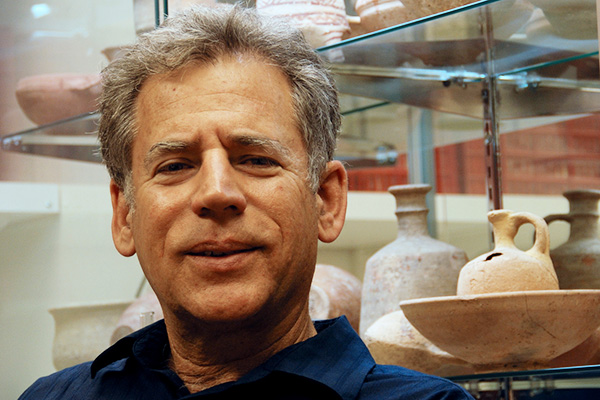UC San Diego Library Publishes Q&A with Cyber-Archaeology Pioneer Tom Levy
San Diego, June 8, 2017 — Thomas E. Levy, a Distinguished Professor in the UC San Diego Department of Anthropology and holder of the Norma Kershaw Chair in the Archaeology of Ancient Israel and Neighboring Lands, is a Levantine field archaeologist, and directs the UC San Diego Levantine and Cyber-Archaeology Laboratory. Levy, a leader and innovator in the field of cyber-archaeology, is also director of the Center for Cyber-Archaeology and Sustainability at the Qualcomm Institute. He is currently the PI on a $1 million UCOP Catalyst grant for At-Risk World Heritage and the Digital Humanities, a UC cyber-archaeology collaboration that includes 3D CAVEkiosks at four campuses. Levy is also co-director of the newly-established Scripps Center for Marine Archaeology. The following Q&A with Levy appears in the Spring 2017 edition of Faculty File (Vol. 8, No. 2), a publication of the UC San Diego Library. It is reprinted here by permission of the Library:

Q Last fall, the first Cyber-Archaeology CAVEkiosk was unveiled at Geisel Library—as part of the UC At-Risk Cultural Heritage and Digital Humanities project. Could you update us on the progress that has been made over the past six months?
A Since we installed the CAVEkiosk in Geisel Library, I’m pleased to say that we have successfully installed those immersive VR platforms at the UC Merced Library and the Phoebe Hearst Museum at UC Berkeley. We will install the final one at UCLA’s Young Research Library by June 2017. All these venues get a great deal of student traffic, so we are pleased that this goal of our Catalyst grant—to make at-risk world heritage sites available to the public through VR—is now working. We have succeeded in developing a library-based online database for ‘big’ 3D data assets like high resolution stereo photographs and laser scan files of archaeological sites. This project is called ‘CAVEbase,’ and was developed by Chris McFarland in collaboration with the Center for Cyber-Archaeology and Sustainability and the Cultural Heritage Engineering Initiative (CHEI).
Q In addition to the linking of your UC San Diego team with archaeologists from the UC Berkeley, UC Merced, and UCLA campuses for the analysis, visualization, and documentation of digital archaeology data and imagery, the project includes an important crowdsourcing component with TerraWatchers. How does that work?
A TerraWatchers was developed by my friend and senior research affiliate, archaeologist Stephen Savage, who built an online crowdsourcing portal for satellite image analysis in early 2015. For our Catalyst project, it uses trained undergraduate students to help assess the impact of military activity and looting on archaeological sites in Lebanon, Syria, and Iraq. The TerraWatchers portal makes two sets of satellite imagery available—those from Google Earth/Maps, and from Digital Globe, through participation in the Qualcomm Institute’s Big Pixel Initiative. Registered TerraWatchers can simply toggle between satellite images from the two basemaps, allowing them to compare and contrast apparent damage photographed on different days or times. They also have tools to mark suspect areas on the images, which experts can then verify.
Q You recently were appointed to a leadership position to help direct the new Scripps Center for Marine Archaeology. Tell us about that.
A At the beginning of the academic year, I was asked to co-direct—with Professor John Hildebrand—the new Scripps Center for Marine Archaeology, a joint venture of the Department of Anthropology and Scripps Institution of Oceanography. The goal is to create a center based on transdisciplinary (team science) research that explores how societies adapt to coastal settings in response to climate, environmental, and social change over the past 10,000 years. We hope to bring together all of UC San Diego’s strengths across the academic divisions on campus to create a new approach to marine archaeology.

Q Earlier this spring, the Center for CyberArchaeology and Sustainability teamed up with the Virtual Reality (VR) Club at UC San Diego in sponsoring a cyber-archaeology hackathon. Were you pleased with the way this worked and the level of student engagement?
A The VR Club at the university has over 200 very talented undergraduate students involved in a wide range of VR projects. It so happens that the president of the club, Connor Smith, is one of the students on our Catalyst project team, along with two other club officers. These are amazing young people. Jurgen Schulze, my colleague from the Department of Computer Science and Qualcomm Institute, is a co-PI on the Catalyst project and is also advisor for the VR Club. During the winter quarter, I went to one of the VR Club’s demo evenings, and immersed myself in one of the student’s ‘Virtual Taco Shop,’ wearing a personal head-mounted VR device. At that time, it dawned on me that we should have a ‘Cyber-Archaeology VR Hackathon.’ We provided the students with five archaeology excavation sites and digital assets to choose from. To my surprise, they chose to work with a few of my excavation projects in Jordan. The winning project focused on an Iron Age (10th c. BCE) copper production center called Khirbat en-Nahas. The students created a VR model where you can visit the mine and the copper smelting operation and meet a random Iron Age miner. The project is called “Little Connor and the Ore of the Covenant.”
Q You were a pioneer in establishing the relatively new field of cyber-archaeology. You also were among the first wave of faculty members at UC San Diego to take advantage of the Library’s research data curation services, when they were initially offered some six or seven years ago. How has the “data avalanche” for archaeologists evolved since then?
A Archaeologists are now busy collecting digital data all over the world. One of the big questions is what will become of these precious data in the future. My suggestion is that at research universities, the Library should be the ultimate repository for digital data. With our Catalyst grant work, we have collaborated very closely with information technology and data preservation specialists at the Library. I think our group is helping to push the envelope on how to integrate ‘big archaeological data’ into a state-of-the-art data curation system.
_________________
Professor Levy is a Fellow of the American Academy of Arts & Sciences, and was recently elected Chair of the Committee on Archaeological Policy of the American Schools of Oriental Research. He is also a Fellow of the Explorers Club, and won the 2011 Lowell Thomas Award for “Exploring the World’s Greatest Mysteries.” Levy has published 13 books and several hundred scholarly articles, and won the Biblical Archaeology Review’s Best BAR Article award (with Mohammad Najjar) for “Condemned to the Mines: Copper Production & Christian Persecution.” His most recent book, “New Insights into the Iron Age Archaeology of Edom, Southern Jordan: Surveys, Excavations and Research from the Edom Lowlands Regional Archaeology Project” (UCLA Cotsen Institute of Archaeology Press), was co-edited with Mohammad Najjar and UC San Diego alumnus Erez Ben-Yosef.
Related Links
UC San Diego Library Faculty File
Center for Cyber-Archaeology and Sustainability
Scripps Center for Marine Archaeology
Qualcomm Institute
